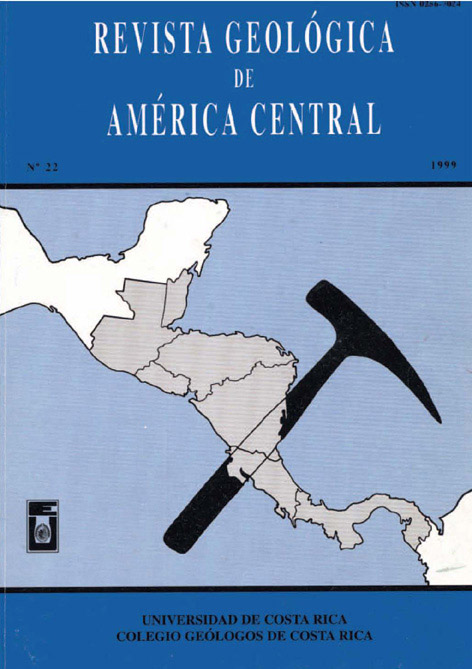Abstract
This study calls attention to the occurrence of plutonic detritus in cretaceous forearc sandstones fromnorthwestern Costa Rica. Plutonic rock fragments are overlooked accessory particles, commonly present inpyroxene-bearing sandstones overlying the Nicoya ophiolite complex. Based on the modal analysis of frameworkgrains, I analized three sandstone suites of the El Viejo and Rivas Formations which include both shallow and deep-water facies, ranging from Late Campanian to Maastrichtian in age. In terms of primary framework components,sandstones bearing plutonic detritus are similar to those derived from magmatic arcs. Two modal parameters areintroduced to evaluate plutonic contributions. These are defined as the ratio of plutonic to total lithic fragments(Lp+intercrec.QF/Lt) and the ratio of uralitized pyroxene to total pyroxene grains (uralPx/Px). Modal values forLp+intercrec.QF/Lt indicate that plutonic fragments average up to 9% of total lithics. The strong relationshipbetween both parameters suggests that uralitized pyroxene grains also result from intrusive rocks. Source rocksprobably correspond with basic and intermediate intrusive rocks, like gabbros, dolerites, and diorites. In particular,high concentrations of lithic fragments exhibiting micrographic textures and uralitized pyroxene grains areinterpreted to be principally derived from eroded plagiogranitic intrusions. Moreover, sandstone ages based onlarge foraminiferal assemblages indicate a pre-Late Campanian age for these intrusions. Distribution of sandstonesuites records provenance areas located on Nicoya Peninsula as well as in the area of Cerro Barbudal, north of theGolf of Nicoya. Sandstones suites containing plutonic detritus signal incipient unroofing of low levels of theMesozoic ophiolitic sequence in the Late Campanian and Maastrichtian times. In consecuence, plutonic andassociated radiolarian cherts grains can be used as detrital paleotectonic indicators of vertical uplift of the CostaRican orogen during the Late Cretaceous. This tectonic event is consistent with the onset of the Laramide orogeny.Field observations reveal that intrusive rocks within the Nicoya Complex even today represent a miscellaneoussource of sediment in northwestern Costa Rica.##plugins.facebook.comentarios##
Downloads
Download data is not yet available.






